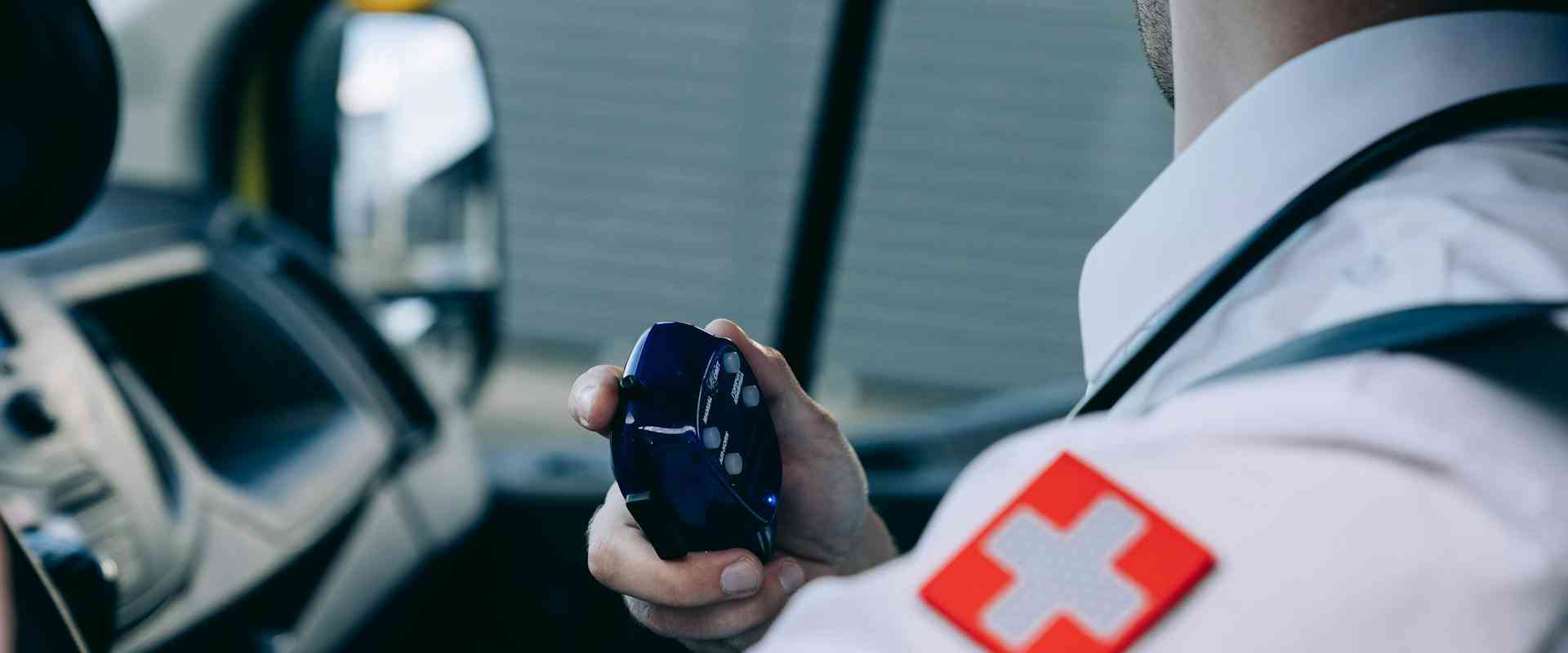Key Points
- Speedballs are a dangerous mix of heroin and cocaine that can lead to fatal overdose.
- This highly addictive combination requires urgent intervention and treatment.
- Treatment usually involves medical detox and comprehensive addiction rehab.
A speedball is a combination of 2 powerful drugs, heroin and cocaine, usually taken intravenously or through other means of ingestion. Also known as a “powerball,” “ball,” or “Belushi” (in reference to the late comedian John Belushi, who died from a speedball overdose), this mixture creates an intense high that combines heroin’s sedative effects with the stimulating effects of cocaine. Despite their potentially fatal consequences, people who use speedballs seek out the simultaneous rush of euphoria and energy they provide.
The synergy between these 2 potent and dangerous drugs creates a highly unpredictable experience. Speedballs pose serious risks to users’ physical and psychological health. And the use of speedballs despite their obvious dangers signals an urgent need for intervention and treatment.
So what is a speedball, and what are its effects? Let’s look at how this drug combination works, its risks—including overdose—and how to get help for speedball addiction.
What’s in a Speedball?
A speedball is a combination of 2 strong and potentially lethal substances: heroin and cocaine. This deadly mix of uppers and downers is often prepared by mixing powdered cocaine, a stimulant derived from the coca plant, with heroin, a semi-synthetic opioid derived from the opium poppy. This heroin and cocaine mix carries a high risk of life-threatening consequences—which is why it’s crucial for those struggling with this kind of drug abuse to get professional help.
What Are the Effects of a Speedball?
Heroin works by binding to opioid receptors1 in the brain, producing dopamine, which causes its euphoric effects. Cocaine, a stimulant, makes users feel energetic and alert. The interaction between these 2 substances produces a complex and unpredictable physiological response that alters users’ mood, behavior, and overall perception. The combined effects of heroin and cocaine create a euphoric high that’s often accompanied by a profound sense of relaxation.
Stimulating and depressing your central nervous system at the same time can have immediate, life-threatening consequences. According to the Florida Alcohol & Drug Abuse Administration, “Taking stimulants with opioids2 can cause negative side effects typically associated with the abuse of either one individually, such as a state of general confusion, incoherence, blurred
vision, stupor, drowsiness, paranoia, and mental impairment because of lack of sleep. The combination can also result in uncontrolled and uncoordinated motor skills, and also the risk
of death from stroke, heart attack, aneurysm, or respiratory failure.”
The interaction between these contrasting substances can also result in a range of long-term health impacts.
Explore Heroin Treatment Centers
What Occurs During a Speedball Overdose?
The simultaneous use of heroin and cocaine in a speedball carries a significant and potentially fatal overdose risk. The combined effects of these substances on the central nervous and cardiovascular systems can trigger a range of severe symptoms that may indicate an overdose:
- Extreme drowsiness
- Confusion
- Difficulty breathing
- Irregular or slowed heartbeat
- Severe chest pain
- Seizures
- Loss of consciousness
In some cases, a speedball drug overdose can result in respiratory failure, cardiac arrest, and ultimately, death. A speedball overdose is a critical emergency that requires immediate medical attention.
What Are the Risks and Dangers of Speedballs?
Speedballs pose a grave danger due to their high risk of life-threatening outcomes. People who use this deadly drug combination face several serious risks:
Heart Attack
Speedballs significantly increase the risk of heart attack due to the intense stimulation of the cardiovascular system caused by the combined effects of heroin and cocaine.
Stroke
Speedballs increase the risk of stroke, as the combination of these substances can elevate blood pressure to dangerous levels.
Respiratory Failure
Speedballs can cause respiratory depression, increasing the risk of breathing difficulties and potential respiratory failure.
Overdose
Combining heroin and cocaine in a speedball can increase the risk of overdose, as users may miscalculate the dosage or underestimate the potency of the mixture.
Cardiac Arrest
The simultaneous use of heroin and cocaine in a speedball can trigger cardiac arrest, especially in those with underlying heart conditions or a history of cardiovascular issues.
Seizures
Speedballs increase the likelihood of seizures, as the combination of heroin and cocaine can disrupt the brain’s electrical activity and lead to convulsions.
Increased Risk of Addiction
The potent effects of speedballs can quickly lead to addiction, as the intense euphoria and stimulation produced by this mixture can create a powerful psychological and physical dependence.
Mental Health Complications
Prolonged use of speedballs can lead to severe mental health issues including anxiety, depression, paranoia, and psychosis.
Treatment Options for Speedball Addiction
Opioids like heroin quickly create a strong physical dependence.3 According to the National Institute on Drug Abuse,
“Heroin… produces profound degrees of tolerance and physical dependence. Tolerance occurs when more and more of the drug is required to achieve the same effects. With physical dependence, the body adapts to the presence of the drug, and withdrawal symptoms occur if use is reduced abruptly.”
As such, it’s important to detox from speedballs in a medically supervised setting. It’s also important to remember that detox is only the first step and should be followed by a comprehensive opioid treatment program.
Addiction rehab is available in a range of formats. In addition to inpatient treatment, you may also choose to attend a partial hospitalization program, where you’ll spend your days at a treatment facility and return home at night, or an intensive outpatient program, where you’ll attend intensive programming on a part-time basis.
Get Help Today
If you or someone you know is struggling with the devastating effects of speedball addiction, it’s essential to get professional help as soon as possible. Medical detox, followed by quality care in an addiction treatment program, can help you safely recover from the effects of speedballs and get on track toward a healthier and more fulfilling life.
Frequently Asked Questions About Speedball Addiction
What are the risks and dangers of using speedballs?
Speedballs, a combination of heroin and cocaine, pose severe risks including heart attack, stroke, respiratory failure, cardiac arrest, seizures, addiction, and mental health complications. The simultaneous use of these substances heightens the chances of life-threatening outcomes, making immediate intervention and addiction treatment crucial.
What happens during a speedball overdose?
A speedball overdose (a result of combining heroin and cocaine) is often marked by extreme drowsiness, confusion, difficulty breathing, irregular heartbeat, chest pain, seizures, and loss of consciousness. It can escalate to respiratory failure, cardiac arrest, and in critical cases, death. Urgent medical attention is critical if someone shows these signs.
What’s involved in speedball addiction treatment?
Treatment for speedball addiction usually starts with medically supervised detox, which is crucial for managing withdrawal symptoms. But detox is just the beginning. Following detox, comprehensive addiction treatment is necessary to address underlying issues and aid long-term recovery. This can be done via an inpatient, partial hospitalization, or intensive outpatient program.
-
NIDA. 2022, March 22. What effects does heroin have on the body?. Retrieved from https://nida.nih.gov/publications/research-reports/heroin/effects-of-heroin-on-body on 2023, November 21
-
“Speed-balling”: Mixing Stimulants and Opioids Micro-module.” FLORIDA ALCOHOL AND DRUG ABUSE ASSOCIATION (FADAA). https://www.training.fadaa.org/Speedballing/Speedballing_PPT.pdf
-
NIDA. 2021, April 13. What are the long-term effects of heroin use?. Retrieved from https://nida.nih.gov/publications/research-reports/heroin/what-are-long-term-effects-heroin-use on 2023, November 21
Return to Resource Library
Our Promise
How Is RehabPath Different?
We believe everyone deserves access to accurate, unbiased information about mental health and addiction. That’s why we have a comprehensive set of treatment providers and don't charge for inclusion. Any center that meets our criteria can list for free. We do not and have never accepted fees for referring someone to a particular center. Providers who advertise with us must be verified by our Research Team and we clearly mark their status as advertisers.




















